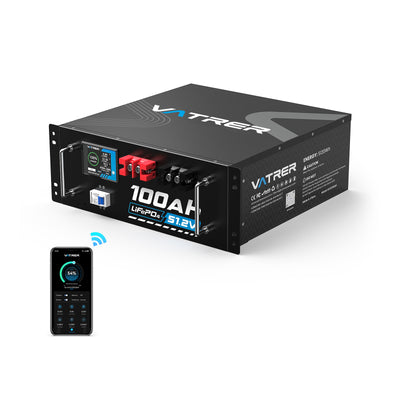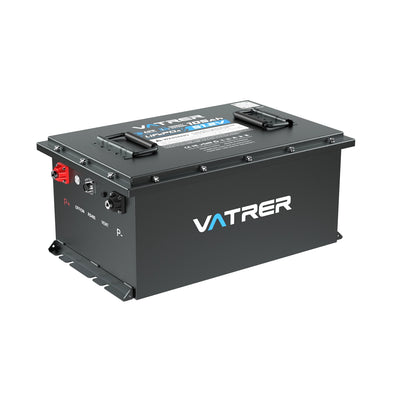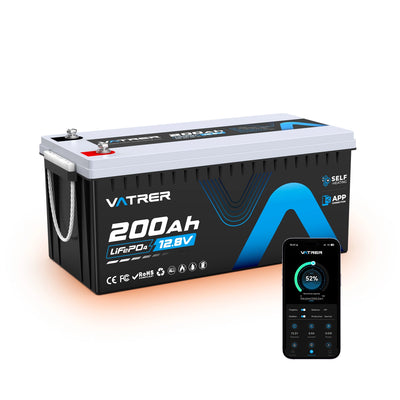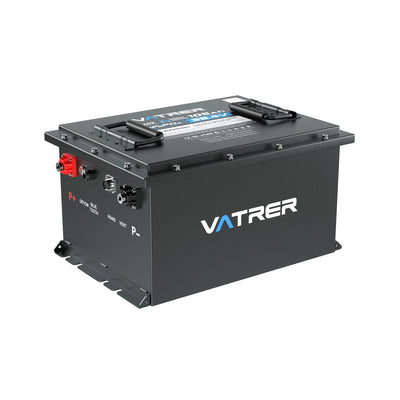
How Many Batteries Does a Golf Cart Take
From the outside, a golf cart looks quite straightforward, but almost everything about how it performs – how far it goes, how quickly it accelerates, and how much upkeep it needs – comes down to its batteries. Understanding how many batteries a golf cart takes is about more than just counting the units under the seat. It means knowing your system voltage, the battery types available, and how each configuration affects battery life, driving range, and long-term cost.
This guide takes you through the essentials so you can confidently identify, look after, or upgrade your golf cart battery setup.

Battery Basics for Golf Carts: Voltage, Setup & Types
The number of batteries in a golf cart depends on three key factors:
- the system voltage (36V, 48V, 72V).
- how the batteries are connected.
- and the battery types used.
System Voltage
Your system voltage determines how many batteries you need.
A 36V cart requires batteries that add up to 36V in total.
A 48V cart needs a battery combination that totals 48V.
A 72V cart requires 72V overall.
Battery Types
Golf carts usually rely on two main categories of batteries:
- Lead-acid batteries (flooded or AGM): Cost-effective and well established, but heavier, with a shorter lifespan and more maintenance.
- Lithium batteries: Lighter, effectively maintenance-free in everyday use, with a longer lifespan and more stable power delivery.
The right choice depends on the voltage of your electric golf cart and how you intend to use it.
Here’s a table summarising the most common electric golf cart configurations, based on system voltage and battery size.
(Note: “batteries for your golf cart” will often depend on the voltage and battery type. Always check your cart’s manual or the battery tray.)
| System Voltage | Battery Count | Common Configuration | Notes |
|---|---|---|---|
| 36V | 6 batteries | Six 6V batteries | Used in older or light-duty carts. |
| 48V | 4–8 batteries | Four 12V, six 8V, or eight 6V batteries | Most common modern setup. |
| 72V | 6 batteries | Six 12V batteries | High-performance carts. |
| Lithium (48V/72V) | 1 battery pack | Single lithium golf cart battery | Simplifies wiring and ongoing maintenance. |
Main takeaway: the number of batteries is not random; it is directly linked to the voltage system. A 48V cart can use different battery counts depending on how the manufacturer designed it (4 × 12V or 6 × 8V).
Upgrading to a single lithium golf cart battery pack is becoming more common and helps reduce complexity.
Why Do Golf Carts Use Multiple Batteries?
Why not just one large battery? Here are the main reasons:
- Electric motors in a golf cart require relatively high voltage and current. Connecting several smaller batteries in series achieves the required voltage without having to build one massive battery cell.
- This keeps cost and weight under control and allows you to replace individual units (in lead-acid systems) instead of the entire battery bank.
- Using multiple batteries also allows more flexible weight distribution under the cart floor, improving balance and handling.
- As lithium battery technology has advanced, a single large pack has become practical, but many carts still use multi-battery setups due to tradition and cost considerations.
Tip: If someone advises you to “just replace one battery” in a series string, be careful. One weak battery will pull down the whole series and reduce overall system performance.
How to Identify Your Golf Cart Battery Setup
Here’s how to check how many batteries your golf cart uses and what voltage system it runs:
- Look under the seat or in the battery tray and count the individual battery units.
- On one battery, find the label showing the voltage (6V, 8V, or 12V).
- Multiply that voltage by the number of batteries you counted to get an approximate system voltage.
Example: 6 × 6V batteries = 36V system.
Example: 4 × 12V batteries = 48V system.
- Confirm this with your owner’s manual or the manufacturer’s data plate.
- If you see one large lithium pack (often labelled “48V” or “72V” with a high Ah rating), this is likely a lithium upgrade rather than the original multi-battery lead-acid layout.
By carrying out this simple check, you’ll understand your “battery setup” and be better prepared to speak with suppliers, carry out maintenance, or plan upgrades.
How Golf Cart Battery Count & Voltage Affect Performance
The number of batteries and the system voltage are more than technical details – they directly influence how your cart behaves:
- Higher voltage (or better battery chemistry) usually means more speed and stronger hill-climbing. A 72V system will normally accelerate faster and handle gradients more easily than a 36V system.
- Range/battery capacity: Higher voltage systems often allow for greater battery capacity or improved efficiency, helping you travel further on a single charge.
- Efficiency & weight: More batteries usually mean more weight, which can reduce efficiency unless the system is well optimised.
- Cost trade-off: More batteries or higher-voltage systems cost more to buy and maintain, but can provide a lower cost per mile if the cart is used frequently.
In short, when you think about the “number of batteries”, you should also think: voltage + capacity + performance, not just the count.
Maintenance Considerations: Fewer Batteries, Less Hassle
The number of batteries you run has a direct impact on maintenance, especially when comparing traditional and modern systems.
- Lead-acid batteries (flooded or AGM) in multi-unit setups: Require regular topping up with water (for flooded types), cleaning of terminals, and monitoring of charge and discharge behaviour. If one battery in the series fails, the entire system is affected. More batteries mean more potential failure points.
- Lithium batteries: In practice, they are often close to maintenance-free – no watering, minimal terminal corrosion, and a longer service life. A single large lithium pack can replace several separate batteries, which significantly reduces routine maintenance. For example, the Vatrer 48V 105 Ah golf cart battery offers real-time monitoring, a built-in BMS, up to 4000+ cycles, and a much simpler maintenance routine.
Tips: If you prefer to avoid frequent checks or live in an area where battery servicing is inconvenient, it is usually worth choosing a lithium setup for fewer issues over time.
Battery Lifespan, Replacement Costs & Long-Term Ownership
Your chosen battery setup will also affect your long-term costs.
- Lead-acid lifespan: typically shorter, around 4–6 years
- Lithium lifespan: often longer, around 8–10 years or more
- Replacement cost: Six batteries cost more to replace than four
- Lithium upgrades: Higher initial cost but lower long-term cost due to reduced maintenance and extended life
A well-engineered lithium golf cart battery, such as those from Vatrer, provides a practical way to cut maintenance and extend battery life, thanks to high-cycle LiFePO4 chemistry, integrated BMS protection, and stable output.
Signs It's Time to Replace Your Cart Battery
All batteries wear out eventually, regardless of type. Watch out for:
- Reduced driving range
- Slower acceleration or weaker hill-climbing
- Longer charging times
- The charge dropping more quickly than usual
- Swollen or leaking battery cases
- Heavy or recurring corrosion
Tip: If one lead-acid battery fails, replace all the batteries in the series to avoid imbalance in the system.
How to Choose the Right Battery Setup for Your Needs
Selecting the right setup depends on how you use your electric golf cart:
- Light or occasional use / flat terrain: 36V systems with six 6V batteries are generally sufficient.
- Daily use or mixed terrain: 48V systems provide better range, speed, and efficiency.
- Steep terrain, heavy loads, or high-performance driving: 72V systems or a high-capacity lithium battery are better suited.
- Minimal maintenance & best long-term value: A single Vatrer lithium golf cart battery offers long cycle life, lighter weight, and maintenance-free use. Lithium batteries also provide higher usable capacity from the same Ah rating, improving range without increasing weight.
Conclusion
So, how many batteries does a golf cart take? In most cases, you will find 4–6 batteries in a standard lead-acid setup (depending on voltage). But the more important question is: what system voltage do you require, and could a modern lithium battery pack replace several separate units? The number of batteries you choose affects speed, range, maintenance, and cost.
By understanding your cart’s battery setup, checking the battery count and voltage, and choosing the right chemistry (lead-acid or lithium), you set yourself up for reliable and efficient operation.
When you decide to upgrade, consider choosing a trusted lithium golf cart battery solution, such as those from Vatrer, which offers longer lifespan, maintenance-free operation, and more consistent performance. Base your decision on how you use the cart in real life, not just on the number of batteries.
FAQs
Can I Mix Different Battery Types Or Brands In My Golf Cart?
Mixing different battery types or brands in the same pack is almost always a bad idea. Even if the voltage rating matches, each battery will have its own internal resistance, capacity, and ageing behaviour. When you connect them together in one series string, the weakest unit limits performance and can end up being overcharged or over-discharged compared with the rest.
This applies whether you are using lead-acid batteries or lithium batteries. For the best battery life and stable performance, always run a matched set: same type, same brand, same age, and ideally bought at the same time.
Should I Upgrade From 36V To 48V For My Electric Golf Cart?
Upgrading from 36V to 48V can improve acceleration, hill-climbing ability, and often overall efficiency, but it involves more than simply swapping the batteries. You must make sure that your motor, controller, solenoid, and charger are all compatible with 48V.
In many situations, owners choose to upgrade the whole system at once or use a dedicated 48V lithium golf cart battery kit that includes the battery, charger, and sometimes wiring guidance. If your cart is mostly used on flat ground at modest speeds, a well-maintained 36V system can still be adequate. If you regularly carry heavy loads or drive on hilly routes, 48V (or higher) usually makes more sense.
How Do I Choose The Right Battery Capacity (Ah) For My Golf Cart?
Battery capacity, usually given in amp-hours (Ah), indicates how much energy your cart’s battery can store. A higher Ah rating means more range, but also higher cost and, for lead-acid batteries, more weight.
Start by estimating how many miles or hours of use you want between charges, then check how much current your cart typically draws. For example, if you often drive longer routes or use your cart for commuting around your neighbourhood, it may be worth investing in a higher-capacity lithium battery to avoid charging halfway through the day. With lithium, you also benefit from more usable capacity for the same Ah rating, because the voltage remains higher for more of the discharge curve compared with lead-acid batteries.
Do I Need A New Charger If I Switch To A Lithium Golf Cart Battery?
Yes, in most cases. A charger designed for lead-acid batteries follows a different voltage profile and may fail to fully charge, or could even damage, a lithium battery. Lithium batteries require a charger that is matched to their chemistry and recommended charging voltage. Many modern lithium packs, including those from Vatrer, are supplied with or compatible with dedicated lithium chargers that work with the built-in BMS (Battery Management System). Using the correct charger protects your investment and helps the lithium battery reach its expected longer lifespan.
How Should I Store My Golf Cart Batteries During The Off-Season?
For lead-acid batteries, the key is to store them fully charged in a cool, dry location and either keep them on a maintenance charger or top them up every few weeks to prevent sulphation.
Never leave a lead-acid pack sitting in a discharged state for months. Lithium batteries are more forgiving, but still benefit from sensible storage: they are best stored at a partial charge (around 40–60%) and disconnected from unnecessary loads. If you are using a single lithium golf cart battery, follow the manufacturer’s storage guidelines. Brands like Vatrer provide clear instructions to minimise capacity loss when the cart is parked for longer periods.
Is A Single Lithium Battery Pack Safe For My Golf Cart?
A single lithium pack that is purpose-built for golf carts is generally very safe, provided it includes a robust BMS and is installed according to the manufacturer’s instructions. The BMS continuously monitors voltage, current, and temperature, and protects against overcharging, over-discharging, and short circuits.
Compared with multiple flooded lead-acid batteries, a sealed lithium battery reduces risks such as acid spills and hydrogen gas build-up during charging. Choosing a reputable brand that clearly publishes specifications and safety certifications, such as Vatrer, adds extra reassurance that the pack is designed specifically for traction use in an electric golf cart.
What Are The Main Benefits Of Choosing A Vatrer Lithium Golf Cart Battery?
A Vatrer lithium golf cart battery is designed to replace a multi-battery lead-acid pack with a single, integrated solution that offers long cycle life, stable power delivery, and far less day-to-day maintenance.
Compared with a traditional cart battery bank, you benefit from a lighter system, quicker charging, and more consistent performance throughout the discharge – so you experience less of that “sluggish and weak” feeling towards the end of a round. The built-in BMS looks after protection and real-time monitoring, while the extended lifespan helps balance the higher initial purchase price.
For users planning to keep their electric golf cart for several years and who want fewer battery-related issues, this type of lithium setup provides a clear step up.
Share



















































